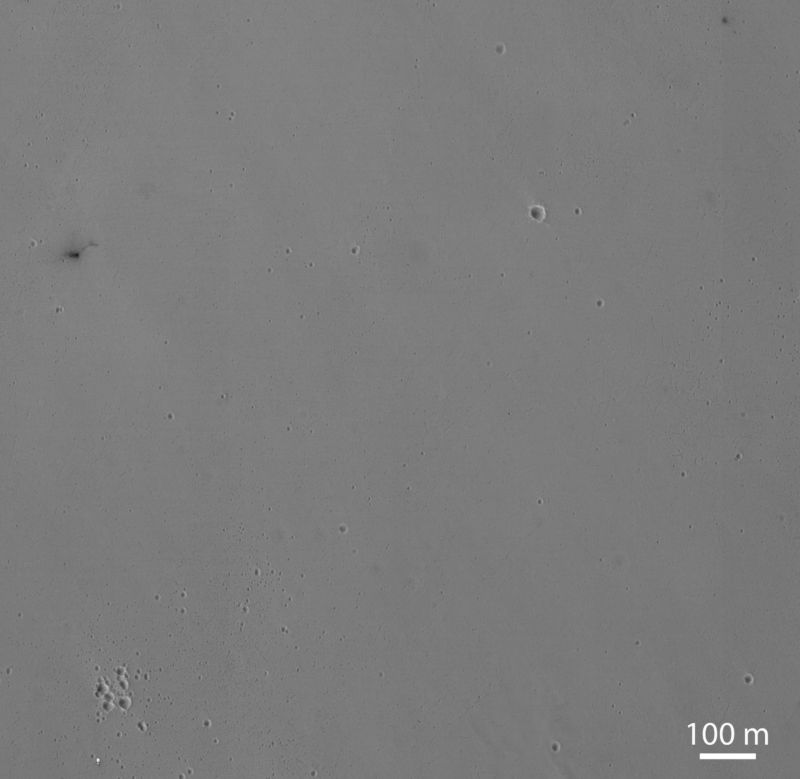
After NASA's Mars Reconnaissance Orbiter found the landing site of Europe's Schiaparelli lander last week, the spacecraft was able to train its High Resolution Imaging Science Experiment camera on the location. On Tuesday, the camera spied three sites where pieces of the lander hit the ground after its descent went awry. NASA released that photo Thursday.
The locations where hardware crashed into Mars are within about 1.5km of one another. The bright parachute is at the bottom of the image, and just below it is a similarly shaped feature with a diameter of 2.4 meters, which is believed to be Schiaparelli's back shell. At the upper right of the image is a dark radial pattern, which is consistent with where the spacecraft's heat shield should have impacted. Bright specks nearby may be insulation reflecting in the sunlight.
The most prominent feature is at the middle, left of the image, which depicts the lander's impact. The 300-kg lander has created a shallow crater about 2.4 meters across and perhaps half a meter deep. However, NASA image analysts could not explain the dark arc to the northeast of the impact crater. This "is unusual for a typical impact event and not yet explained," the news release states. Subsequent imagery should confirm whether this curved feature is image noise or an effect produced by the impact. (The space agency has ruled out tire tracks from Mark Watney's rover as the cause).

The European Space Agency's Schiaparelli lander crashed into Mars on October 19 due to a software error. After a nominal descent through the upper atmosphere, the parachute and back shell were released prematurely, and the spacecraft's slowing thrusters did not fire for long enough. It crashed at a velocity of more than 300kph. NASA should be able to collect full color imagery in the coming weeks to further the ESA investigation.
Listing image by NASA/JPL-Caltech/Univ. of Arizona
reader comments
117